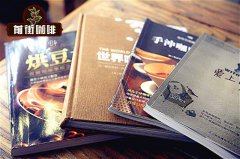Under the impact of Lucky and other new retail coffee, Starbucks has lost its dominant position in China's coffee industry.

Professional coffee knowledge exchange more coffee bean information please follow the coffee workshop (Wechat official account cafe_style)
For years, NASDAQ:SBUX has seen the Chinese market as the biggest growth opportunity. Howard Schultz, the former chief executive of Starbucks, has said he expects China to one day become the company's biggest market, and the company will grow in the Chinese market at an unprecedented rate. Last year, Starbucks opened 612 new stores in China, and now plans to add 600 stores a year by 2022.
Starbucks is successful in China because it caters to the conspicuous consumer mentality of consumers and positions itself as an "affordable luxury". In addition to the status symbol, the company also offers a "third living space" (The Third Place) beyond family and work, a strategy that resonates in China. Like consumers in other markets, Chinese consumers are beginning to see Starbucks as a suitable place for meetings, dates, or pure relaxation.
However, it is the law of the business world that success attracts competition, and Starbucks' success in China has attracted the attention of others. Now, a thorny new competitor has emerged out of thin air in front of the company.
"I can do that, too."
Founded in 2017, Luckin Coffee has rapidly expanded its reach since opening its first store in China in January last year, reaching 600 stores last summer and about 2000 by the end of the year. Ruixing plans to add another 2500 stores this year, bringing the total to more than 4500 by the end of the year, surpassing Starbucks' 3521 in the last fiscal year (ending September 30, 2018).
However, Lucky is by no means a "copycat" Starbucks. Starbucks has been promoting its "third living space" concept, where customers can pass the time leisurely in a comfortable environment. On the other hand, Ruixing specializes in takeout, and nearly half of its stores have no seats at all. In addition, Lucky's price is about 30% lower than that of Starbucks, and it also offers a generous subsidy of "buy one get several free". Management is not wrong with the "inverted operation" during the expansion period.
Qian Zhiya, chief executive of Ruixing, said the company was "in no hurry to make a profit", according to Fortune. This is an unusual policy for the catering chain and may eventually cost the company. Yang Fei, chief marketing officer of Ruixing, said: "for at least the next three to five years, Ruixing will continue to use subsidies as one of its core strategies." Finally, Lucky doesn't accept cash, and customers need to use the company's app or SEHK:700;NASDAQ:TCEHY 's ubiquitous WeChat Pay to pay. Note: Tencent is an important partner of Lucky.
While Starbucks welcomes competition and claims that the Chinese market has plenty of room for other coffee chains, the company has been changing its strategy in China in response to Lucky's growing popularity.
Last August, Starbucks announced a new partnership with Alibaba, in which Alibaba's "ele.me" ordering platform will provide takeout services in its 2000 Chinese stores. Following one of Ruixing's key strategies, Starbucks will move into Alibaba's Xiansheng supermarket and open a "Starbucks Delivery Kitchens" that specializes in takeout.
Starbucks' same-store sales growth in China has slowed in recent quarters. According to its latest results for the first quarter of fiscal 2019, the company's same-store sales in China grew by only 1%, while transaction volume fell by 2%, compared with a 6% growth rate in the first quarter of 2018 before Ruixing opened the store. In view of Starbucks' strong same-store sales growth in the past few years, the author believes that in addition to China's economic slowdown and other mixed factors, Ruixing's rapid expansion has also had an impact on the company.
At an investor meeting in December, Starbucks said it would continue to expand rapidly in China to build a first-mover advantage. The company expects its same-store sales in China to grow at a long-term annual rate of 1% to 3%, slower than the 3% to 4% expected in the United States, and may fall short of the expectations of some investors. In addition, Starbucks mentioned at the meeting the disadvantages they faced, in addition to its own cannibalization (caused by the company's deep penetration into major markets such as Beijing and Shanghai) and China's economic slowdown, the company also pointed to competitive factors.
"We have to admit that competition is intensifying, but we believe that with our brand advantage in China, the impact of this competition is relatively short-lived," said Patrick Grisme, finance director.
Is the impact of new entrants such as Lucky and Costa Coffee, the newly acquired coffee chain of Coca-Cola, as temporary as Glimer said? It remains to be seen. There is no doubt that Lucky's money-burning strategy is risky, losing more than $100m last year, but the company will add 2500 stores this year, and their impact on Starbucks will only increase.
What is clear is that Starbucks is taking sensible steps to prepare for threats, including working with Alibaba and rapidly launching takeout services for its 2000 Chinese stores. Although Starbucks' development path in China has become bumpy, the company still seems to be on the right track.
END
Important Notice :
前街咖啡 FrontStreet Coffee has moved to new addredd:
FrontStreet Coffee Address: 315,Donghua East Road,GuangZhou
Tel:020 38364473
- Prev

Java Tiwus Iron pickup Coffee what are the characteristics of Java coffee? How do you drink Java coffee?
Professional coffee knowledge exchange more coffee bean information please follow the coffee workshop (Wechat official account cafe_style) Java is not famous for 7-11 curry rice, but coffee, cocoa and other crops. Java has a long history of producing coffee, and Mocha-Java, the oldest formula bean, must use Java to support the Body and bitterness of coffee. In some coffee drinks have a long history.
- Next

New York Futures: Arabica coffee falls to its lowest level in more than 13 years as Brazil is about to harvest
Professional coffee knowledge exchange more coffee bean information please follow coffee workshop (Wechat official account cafe_style) Reuters New York / London April 1-ICE Arabica coffee futures fell to a low in December 2005 on Monday as the approaching harvest in Brazil, the main producer, put pressure on an already oversupplied market, while New York cocoa futures rose to more than two months.
Related
- What documents do you need to go through to open a coffee shop? coffee shop coffee shop certificate processing process
- How to purchase Coffee beans in small Cafe how to choose a suitable supplier for domestic Coffee supply Company
- How to drink Starbucks Fragrance White Coffee? how to make Australian White Coffee? what Italian coffee beans are recommended?
- The Story of Flora Coffee: the name of Flora Coffee Bean and the implication of the Flowers on Florna Coffee
- How much does a cup of coffee cost? How much is the profit of a cup of coffee? What is the profit of the coffee shop in a year?
- Yunnan small Coffee, known as "fragrant Coffee", introduces the characteristics of Alpine Arabica Coffee producing areas in Yunnan, China
- 2023 latest Starbucks full menu price list how much is a cup of Starbucks coffee what is better to drink the most popular hot and cold drinks recommended
- Starbucks different kinds of Coffee Price list Starbucks menu 2023 Top Ten Best drinks in Starbucks
- Starbucks Spring praise Comprehensive matching Coffee Bean theme Story Packaging implication and taste description
- The cost of a cup of coffee latte American coffee cost price and selling price

